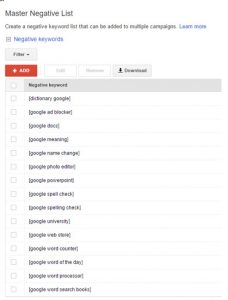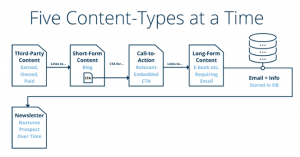The title is not a trick question. Suffering from your success can be a painful point in any business, and— let’s face it—in the entrepreneur’s life as well.
As the CEO of your small business you should be running things, your business should not be running you. Unfortunately, too often than not, when the promise of new customers and exciting offers come knocking, pausing to breathe seems like the last priority on anyone’s list. You are just going to dive in and go for it because that is why you got into business in the first place, right? Wrong!
Regardless of the industry you are in, proper planning and the right perspective are necessary in order to help you carry out sustainable growth. Read on to discover the steps you can take today to stop your small business suffering once and for all.
Plan For Your Growth
Of course everyone says small business growth can be managed if you plan for it. The thing is, no one is ever quite sure when that growth will happen. That is why it is important to tuck a few “what-if” scenarios in your back pocket so you can reach for them when an exciting growth opportunity comes your way.
Start by identifying some key indicators that will help you determine when a growth surge is happening. An increase in sales is an obvious indicator, but what about all of the things that lead to that increase in sales: a news article on your company, exposure at a conference or expo, etc.? When traction for your small business starts to pick up, it is important to step back as early as possible and prepare for the activity ahead.
Having baseline numbers or an understanding in place will help ensure that your systems can handle your growth. One way to do this is to implement real-time data, which, for example, can help you keep an eye on your inventory. What do you have in stock? How much of your assets are held up in that inventory, and how long will it take you to replace it if you were to sell out today?
Another way to plan for your growth is to reassess your company’s cash flow. Make sure your inventory and accounts receivables match so that you do not run into monthly lulls. Consider reaching out to your suppliers and see if you can agree on a reoccurring payment date that works best for your business. Similarly for accounts receivable, offer discounts for early invoices, and put a late-payment policy in place to put some confidence behind your cash flow projections.
Remember, It’s Not All About You
Yes, you are the CEO of your small business and you take your responsibility to fulfill your customers’ demand seriously — but perspective matters. If you are hit with a surge in demand, you may not be able to run your business the way you would like to for a period of time; flexibility and the right attitude will serve you well. There are always other resources you can use to help serve your customers, and the more proactive you can be, the better. For example, you might want to reach out to another supplier of your product to ensure that you can meet any surges in demand now or in the future.
While managing increased demand and the new customers that come along with it, do not forget to tend to your existing customer base too. After all, what is the point of growing your small business if your customer connection gets short-changed in the process?
Continue to nurture your existing customer base during your growth period. Blogs and social media updates are a great way to keep your loyal audience in the loop. Opening yourself up to suggestions and comments, and sharing samples and trials, will allow customers to feel like they have a stake in your development, and will encourage them to grow right along with you.
But, Don’t Forget About Yourself Either
Somewhere today there is an entrepreneur who will have to turn down a new and exciting opportunity because their business is currently unable to meet increased demand. This does not mean their small business is a failure, or that the entrepreneur is doing the opposite of what he/she set out to do, it is simply confirmation that the demand is out there when they are ready to handle it in a sustainable and smart way. When necessary, be confident in the decision to step back and plan to properly meet demand moving forward. If you are currently in firefighter mode, put out immediate threats with credible and reliable resources, and then return to the drafting board.
Often small business owners think planning and preparation are exclusive to the early stage of a business, but the truth is your growth is in direct correlation to the time you invest in nurturing it. Often when entrepreneurs are experiencing a challenge in operations, marketing, or finance, with some reflection they come to find what they really need is to develop their vision and leadership perspective. Taking a step back to assess the whole business—not just your immediate challenges—is crucial.
Consider seeking out an experienced professional who can coach you through your next stages of growth; together you can draft a 3-5 year plan while running drills of those “what-if” scenarios. A proper mentor can teach you to work with your business proactively, rather than reactively.
Perspective plays a key role in how much you choose to suffer from your success. Those current constraints and headaches can be viewed as pathways, pointing out the new directions your business needs to take in order to grow efficiently, effectively, and hopefully pain-free!
Are you suffering from your own small business success? Share your story below!
Business & Finance Articles on Business 2 Community
(334)
Report Post







